Overview of litter dryers and their uses
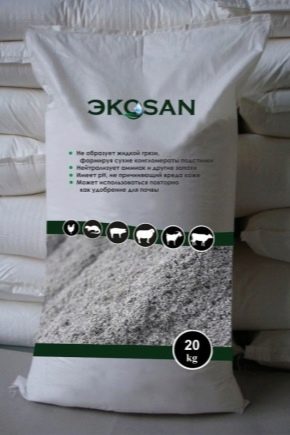
When keeping pets on personal subsidiary plots and on farms, one of the main conditions for proper care is a dry, clean room with a comfortable temperature. In such a room, the animal is protected from infections, fungi, parasites and insects. Various folk remedies were previously used to drain the litter, for example, high moor peat, clay. Now for this on the market there is a large selection of various environmentally friendly modern means.

Description and purpose
In rooms and stalls for pets, litter dryers are used - they are powder or granules of light beige, white. The main component of this product is an adsorbent - a product that absorbs moisture. It can be bentonite clay (montmorillonite) or diatomite (diatomaceous earth) - a sedimentary rock consisting of the remains of diatom algae. Both are natural natural minerals.
Different manufacturers add calcium hydrosilicate, calcium bicarbonate, bacteria absorbing ammonia, various essential oils (pine, eucalyptus, fir).
Montmorillonite and diatomite are mainly composed of negatively charged particles, while heavy metal salts and various toxins are made up of positive ions. When interacting with moisture, the powder swells and attracts positive particles. This is the main operating principle of dehumidifiers.
This powder is scattered in the premises for keeping cows, calves, pigs, poultry. Let's consider what effect is achieved with such a dehumidifier.
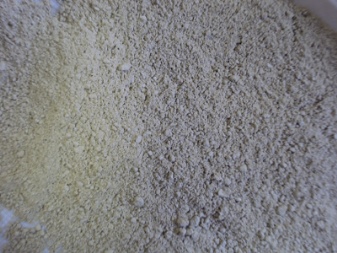
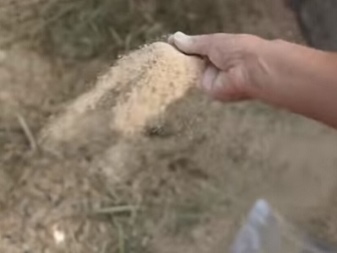
High humidity in the room is a source of reproduction of various pathogenic microorganisms, and indeed it is an uncomfortable environment. The tool absorbs excess moisture, disinfects the room, and also acts as a fungicide, that is, this tool can be used both against parasites and harmful insects.
The oils contained in the desiccant freshen the air in the room, absorb the vapors of ammonia and hydrogen sulfide, which are a consequence of the vital activity of animals, and create a deodorizing effect, which facilitates the breathing of animals and prevents the occurrence of bronchopulmonary diseases.
In addition to the above, dehumidifiers are used to treat wounds, diaper rash in animals, to prevent mastitis in cows, to sprinkle young animals, and also as a dry bath for birds.
When transplanting newborn calves and piglets, the powder reduces the stress element in babies, as it reduces sensitivity to other people's odors.

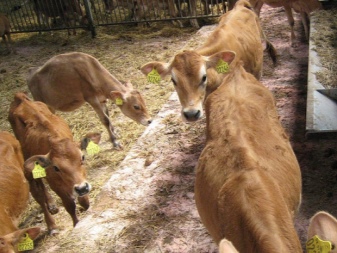
Top manufacturers
The composition of desiccants varies slightly from manufacturer to manufacturer, but they all have strong absorbent properties with antibacterial effects.
Here are the most popular manufacturers and their products.
- LLC "Miragro" and its product "AgroBrand" - hygienic dehumidifier based on bentonite clay, contains plant extracts and calcium carbonate. Available in 2 kg and 5 kg bags. The shelf life is 12 months.
- LLC "Biorost" produces "Bio-Ventum" - a moisture-absorbing agent for livestock farms and poultry houses, which contains pine essential oil, calcium silicate, dioctahedral montmorillonite. Packing - 25 kilograms, shelf life - 24 months.
- Firm "Kvant" releases NDP-D-700 productconsisting of 100% diatomite powder. Packing - 15 kg.
- LLC "AST-ECO" and its high quality product Ed-Sorb 15, which is widely used in pig breeding, is a new generation drug with strong antiviral, antibacterial, insecticidal and fungicidal properties. Sold in 25 kg bags.
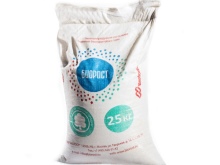
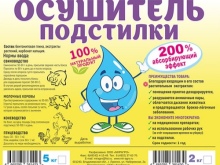

Instructions for use
The packaging of each type of desiccant contains detailed instructions for use. There are slight differences in the dosages for the use of desiccants from different manufacturers, but the average values are approximately as follows:
- for cattle and small cattle 50-150 g / sq. m scattered in stalls with a frequency of 1-2 times a week, in calves - 100 g / sq. m every other day;
- in pig breeding - 100 g 3 times a week, for piglets can be increased to 300 g;
- in poultry houses for different birds, the amount is slightly different, for a chicken coop 50 g / sq. m, and for ducks, geese, turkeys - 80 g / sq. m 2 times a week.

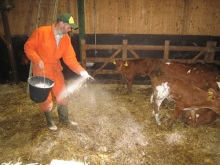

Security measures
It can be immediately noted that all of the above products are non-toxic, hypoallergenic and absolutely harmless to both humans and animals. Hazard class - 4 (low-hazard substances).
When working with desiccants, it is recommended to use masks and eye protection, as the powder is finely dispersed. It can cause dryness in people with particularly sensitive skin, so it is best to use gloves.
But in any case, this remedy can cause only mild irritation to the skin and eyes, which quickly passes.
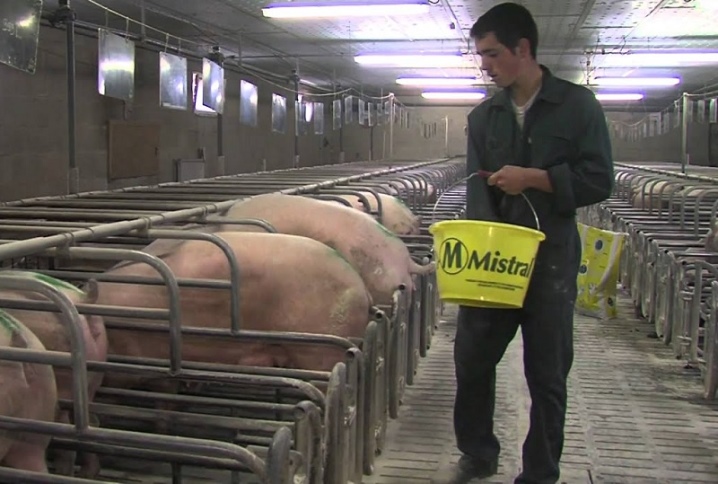
You can learn how to use calf bed dryers in the video below.












The comment was sent successfully.